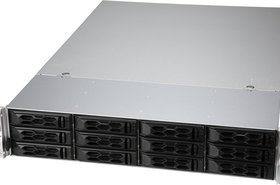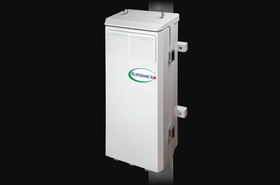Supermicro recently released the third installment in a series of research reports focused on understanding the relationship between data centers and the environment. These research reports look at how IT managers and operators, as well as other individuals in the data center ecosystem, consider actions that benefit the environment.
As demand for IT services continues to grow, so does the amount of servers and infrastructure. Energy, computing power and water consumption have all increased as the world’s needs for connectivity have grown drastically (particularly in 2020). While many in the industry are working to combat their carbon footprint, inevitably this growth contributes to climate change in some way.
Supermicro’s research report asked respondents to list their considerations for greener choices while still optimizing data center performance. We wanted to take a look at some of the key findings to investigate what this means for the industry as a whole.
A look at today’s data centers
As we look across the world at how data centers are built, operated and maintained we can see some key differences across major regions. For example, Supermicro’s research identified that the APAC region often had the most data centers per organization, while EMEA in general skewed in the opposite direction, with organizations operating fewer data centers. However, we see a consistent theme across all regions: an appetite for investment.
The research indicates that organizations across the globe are increasing their investments in servers, storage and other data center infrastructure. All of the surveyed regions, particularly APAC, had their sights set on upgrading critical components, increasing investment in cloud, colocation or hosting and the purchase and installation of more servers.
This begs the question: how will organizations meet these demands and goals while maintaining sustainability and environmentally focused policies? As it stands, data centers consume roughly one-to-three percent of power worldwide. This will increase over time as demand continues to increase.
Supermicro uses the Total Cost to the Environment (TCE) calculation to take into account how data center construction, operation and maintenance affect the environment. Data center managers are implementing new strategies to mitigate environmental impact. The research report identifies some of these factors including:
- Choosing renewable energy sources to power the data center;
- Systems designed around shared power supplies;
- Understanding the impact of materials on the environment (from lifecycle to disposal).
The full report identifies other key strategies. However, what these indicate is that TCE is a primary concern for data center operators across the globe.
Awareness, effectiveness, delivery
While many IT managers identify sustainability as a key issue, it is equally important to be aware of the role ‘green’ data centers play in the industry. The research conducted by Supermicro concluded that any definition of a ‘green’ data center should include specific metrics such as:
- Power density per rack above 25kW;
- Server inlet temperatures above 26.5C;
- Refresh cycles that take advantage of new technology;
- Improved decommissioning and e-waste programs.
While not an exhaustive list, further statistics provided by Supermicro indicate what IT managers consider successful sustainability programs. Asset life cycles became a primary focus of IT managers in 2020, with TCE concerns a major component of the rising importance.
If we look towards the analysis of green power effectiveness, we see a significant trend towards organizations looking for ways to reduce power requirements while simultaneously maintaining Service Level Agreements with their customers. Green data centers need to use less electricity in order to be considered effective.
In order to use less electricity, organizations need to make smart choices about how and where to house the relevant infrastructure. Supermicro’s research report indicates that larger enterprises are moving towards a hybrid model for delivery, This is an interesting trend, especially when compared with smaller organizations who are looking more towards public cloud providers.
How these changing trends and implementation methods are planned and executed over the coming years will have a significant affect on the industry’s overall energy footprint.
Getting to the green
Supermicro offers us some key ideas and concepts to consider when working towards ‘greener’ goals. These ideas can be implemented both quickly and easily in order to reduce capital expenditure.
For example, the report highlights how faster refresh cycles have become increasingly popular from 2019 to 2020 - an increase in two-to-three year refresh cycles by a measure of 31 percent. This big increase demonstrates how refresh cycles have a key part to play in maintaining carbon neutrality (or in some cases, going carbon negative). The advancement of technology offers organizations of all sizes the opportunity to reduce their power consumption and usage.
Similarly, factors like consolidation through server virtualization and elimination of non-functioning servers are also important steps to becoming a ‘green’ data center. Nearly 47 percent of all respondents in Supermicro’s survey indicated that eliminating non-functioning servers was a pivotal strategy in reducing energy consumption.
For a deeper understanding of the steps you can take to improve your sustainability efforts, make sure you download Supermicro’s Data Centers & The Environment: 2021 Report on the State of the Green Data Center.
Further reading
-

Supermicro unveils new server for hyperscale cloud deployments
Specially made for the cloud club
-

Supermicro unveils outdoor Edge box for 5G cell towers
Coming to a pole near you

